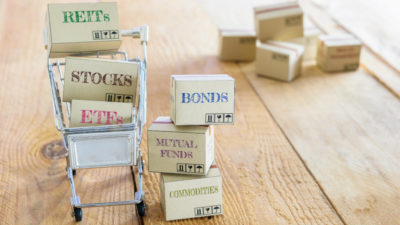Gold bugs finally have a reason to cheer as the price of the precious metal continues to hit new multi-year highs.
Glitter of 2019
Gold started 2019 at just below US$1,300 per ounce. At the time of writing the yellow metal is trading at US$1,520 and pundits across the board are trying to decide how high it could rise.
The rally above the $1,500 mark has already taken out the top end previously targeted by many analysts for this year.
As a result, everyone is curious to see what happens next.
Ongoing support
The rally has been fuelled by safe-haven demand as investors fear the ongoing trade battle between the United States and China could tip the global economy into recession.
The two countries appeared to be on track to settle their differences earlier this year, but the U.S. just announced its intention to hit an additional US$300 billion in Chinese goods with a 10% tariff while negotiations continue.
China responded by halting purchases of American agriculture products.
As the two sides battle it out, the rest of the world is being held hostage and central banks are starting to react as recession signals begin to emerge.
Governments are cutting interest rates and there is a theory that we could be entering a global battle of currency devaluations. That could be ugly stock markets, but positive for gold.
The U.S. and China remain on centre stage, but the UK’s pending exit from the EU is lurking in the shadows. The new prime minister, Boris Johnson, is taking a hard-line approach with threats to leave with no deal at the October 31 deadline.
As that day approaches without an agreement in place, global financial markets could see some serious volatility, which would likely provide an added tailwind to gold demand.
At the same time, falling interest rates and negative bond yields are making gold more appealing for investors who would otherwise hold fixed-income assets.
Japan and Germany, for example, now have negative yields on their government debt. That makes zero-yield gold look pretty good.
According to Deutsche Bank, US$15 trillion of government bonds worldwide now trades at a negative yield, which is about 25% of the total market.
How high could gold go?
If the trade battle between the U.S. and China gets even uglier and the U.K. actually exits the EU without a deal, gold could reasonably take a run at the 2011 high around US$1,900 or even top US$2,000.
As a result, the long-awaited rally in the metal is attracting new interest and the more bullish investors and speculators become, the more likely we could see gold rise to levels nobody would have imagined possible just 12 months ago.
Should you buy gold stocks?
The gold miners have rallied in the past two months, but many are coming off very low levels and still appear cheaply priced, especially if the gains we have seen so far in 2019 can be maintained.
Barrick Gold (TSX:ABX)(NYSE:GOLD), for example, is targeting 2019 production of about five million ounces. All things being equal, a US$200 price increase in gold translates into an additional US$1 billion in cash flow.
At this point, the market likely hasn’t fully grasped the upside potential for the miners, suggesting that might be a good time to add some gold to the portfolio.







